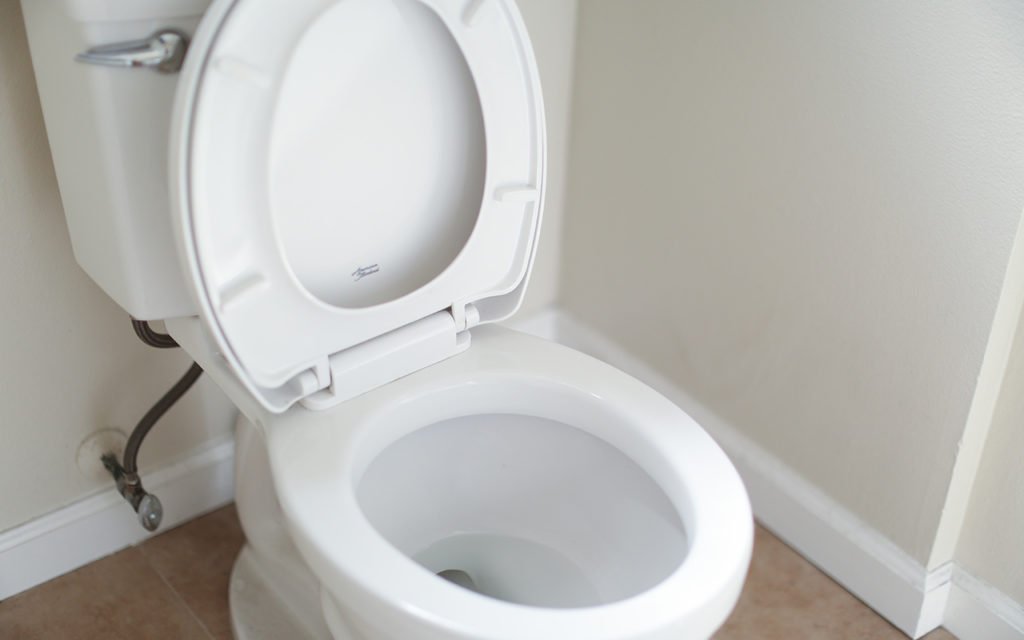
As an owner, you have the ability to make your dwelling into a dream home. While not entirely glorious, bathrooms often leave a big impression on guests and thus become a focus for remodeling for many people.
Undertaking a bathroom remodel can lead to a change in layout, and before you know it, you may find yourself overwhelmed with the amount of work, logistically and physically, that is required. One of the most difficult tasks can be moving the toilet, but have no fear DIYers, here is everything you need to know about getting the job done.
The challenge in moving a toilet is actually due to drainage and water supply plumbing, not so much the literal installation of the fixture. Once you move the toilet drain and water supply, the rest of the job can move along quickly.
The first step in getting your toilet moved is to remove the toilet from its current position. Turn off the water by turning the shut-off valve all the way to the right and removing the remaining water. Removing the rest of the water requires first flushing the toilet, using a plunger to force water back into the drain, and then finally using a sponge to soak up any excess water left over.
Next, disconnect the water supply line from the toilet; but first, put a bucket near the spout to catch any water that leaks out.
Remove the bolts securing the toilet to the floor. It will be easier to move the toilet in parts so first, remove the tank and carefully move it out of the way followed by the toilet bowl. You may need a razor blade to remove any caulk holding the bowl in place. Use care when lifting and storing the toilet so as to not chip the porcelain.
Finally, stuff a rag into the drainpipe to prevent anything from falling in or sewer gasses from emitting into the home.
The more difficult steps begin as you need to access the space that holds the toilet pipes. The drainage pipes often run through the floor and can be accessed from both above and below. This can be done by removing any loose-lay floating floor and cutting out enough of the sub-flooring to get into the area underneath. You can also cut through the drywall ceiling of the room underneath the bathroom to access it from below.
During this step, you can also remove the toilet flange from the floor by using a screwdriver or drill driver – if the flange uses cast iron and is sealed with lead or solder, you may need to utilize a hammer to break it from the floor.
This portion of the job can be completed in a few concise steps once you have gained access to the space:
1) Using a saw, cut away the old toilet bend as close as you can to the waste-vent stack. This cut will be where the new drain will be spliced into place.
2) Position the new drain location in the bathroom with at least 15 inches of space from the center of the drain to all walls and existing appliances such as the shower and bath.
3) Run the new drainpipe from the new toilet location to the waste-vent stack where the toilet bend was cut away. You can utilize a wye fitting to connect the old drain to a new drainpipe, then fit in a 90-degree bend pipe to direct the piping to the new toilet location. All these pipes should be connected with appropriate fittings and glued with a compatible solvent for the material used.
An important part of this step is to ensure that the route into the waste-vent stack uses gradual bends and turns, not sharp elbows that can negatively impact the drain flow. Additional PVC or ABS fittings may be necessary for a stable route.
Also, it’s critical that the drain lines slope down by a pitch of at least ¼-inch per horizontal foot toward the waste-vent stack as the drainage pipes are gravity-fed. The pipes can be supported and held to the joists with straps.
4) Add a 90-degree toilet bend to the new pipe below the new toilet location, then glue an additional 6-inch length pipe from the bend to protrude through the drain opening (new location). This pipe should extend up and out of the bathroom floor.
Extend the previous water supply line in a single run, supported along the joists as necessary, until you reach the new toilet location which should be terminated with a shut-off valve exposed on the exterior wall.
The water pipe emerging from the wall should connect to a copper stub-out elbow with a flange, and the other side of the elbow should be where the shut-off valve is connected.
If the flooring was cut through to access the drainpipe space, then the subfloor and finished floor will need to be replaced. The drainpipe emerging from the floor should be cut to be flush with the level of the finished floor, then a new toilet flange can be installed by gluing it to the drain stub-out and screwing it down to the subflooring.
Lastly, the toilet can be reinstalled on top of the toilet flange. Connect the water supply and turn it on. And finally, test the toilet!
Sometimes a big project like this requires the help of a professional. If you need a plumber in the Central Pennsylvania area – call WM Buffington! Our team of trained professionals can help you with anything from moving a toilet to installing new piping.